20593 FA_hydroxylaseThalassiosira pseudonana
| Chromosome | Product | Transcript Start | End | Strand | Short Name | |
|---|---|---|---|---|---|---|
| 20593 | chr_1 | FA_hydroxylase | 222616 | 224782 | - | FA_hydroxylase |
| NCBI ID | Ensembl Genomes exon ID |
|---|---|
| 7447614 | Thaps20593.1 |
| Expression Profile | Conditional Changes | Cluster Dendrogram | Discovered Potential cis-Regulatory Motifs |
|---|---|---|---|
Thaps_hclust_0014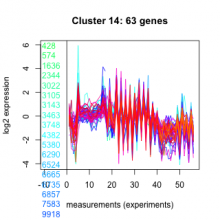 |
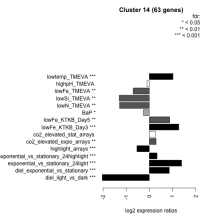 |
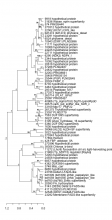 |
| Normalized Mean Residue | Discovered Potential cis-Regulatory Motifs | |
|---|---|---|
|
Thaps_bicluster_0203 |
0.30 |
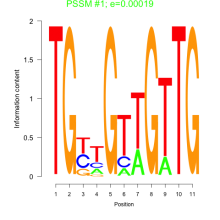 0.00019 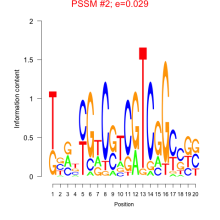 0.029 |
| T. pseudonana | P. tricornutum | P. tricornutum DiatomCyc | F. cylindrus | Pseudo-nitzschia multiseries | E. huxleyi | C. reinhardtii | A. thaliana | P. sojae |
|---|---|---|---|---|---|---|---|---|
| Not available | PHATRDRAFT_47593 | PHATRDRAFT_47593 | 271934 | Not available | Not available | Not available | AT5G57800.1 | Not available |
| KEGG description | KEGG Pathway |
|---|---|
| Not available | Not available |

Add comment